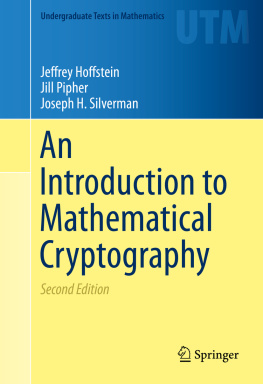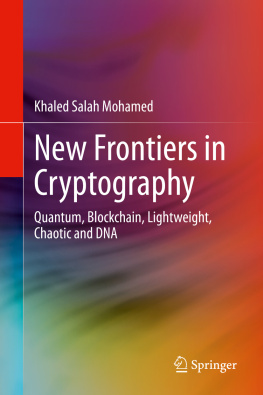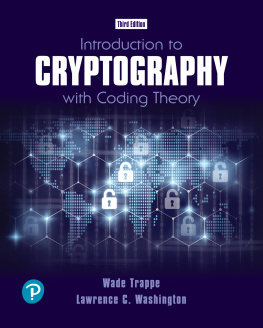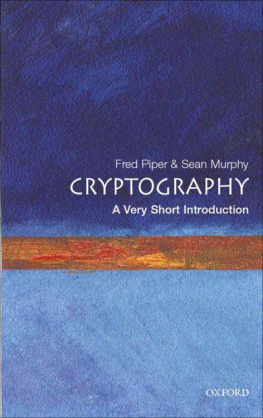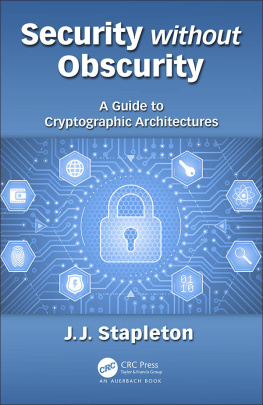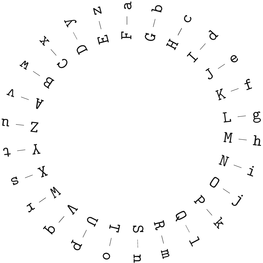1. An Introduction to Cryptography
1.1 Simple Substitution Ciphers
As Julius Caesar surveys the unfolding battle from his hilltop outpost, an exhausted and disheveled courier bursts into his presence and hands him a sheet of parchment containing gibberish:
Within moments, Julius sends an order for a reserve unit of charioteers to speed around the left flank and exploit a momentary gap in the opponents formation.
How did this string of seemingly random letters convey such important information? The trick is easy, once it is explained. Simply take each letter in the message and shift it five letters up the alphabet. Thus j in the ciphertext becomes e in the plaintext , because e is followed in the alphabet by f , g , h , i , j . Applying this procedure to the entire ciphertext yields
The second line is the decrypted plaintext, and breaking it into words and supplying the appropriate punctuation, Julius reads the message
Enemy falling back. Breakthrough imminent. Lucius.
There remains one minor quirk that must be addressed. What happens when Julius finds a letter such as d ? There is no letter appearing five letters before d in the alphabet. The answer is that he must wrap around to the end of the alphabet. Thus d is replaced by y , since y is followed by z , a , b , c , d .
This wrap-around effect may be conveniently visualized by placing the alphabet abcdxyz around a circle, rather than in a line. If a second alphabet circle is then placed within the first circle and the inner circle is rotated five letters, as illustrated in Fig.
Although the details of the preceding scene are entirely fictional, and in any case it is unlikely that a message to a Roman general would have been written in modern English(!), there is evidence that Caesar employed this early method of cryptography, which is sometimes called the Caesar cipher in his honor. It is also sometimes referred to as a shift cipher , since each letter in the alphabet is shifted up or down. Cryptography , the methodology of concealing the content of messages, comes from the Greek root words kryptos , meaning hidden, and graphikos , meaning writing. The modern scientific study of cryptography is sometimes referred to as cryptology .
Figure 1.1:
A cipher wheel with an offset of five letters
In the Caesar cipher, each letter is replaced by one specific substitute letter. However, if Bob encrypts a message for Alice using a Caesar cipher and allows the encrypted message to fall into Eves hands, it will take Eve very little time to decrypt it. All she needs to do is try each of the 26 possible shifts.
Bob can make his message harder to attack by using a more complicated replacement scheme. For example, he could replace every occurrence of a by z and every occurrence of z by a , every occurrence of b by y and every occurrence of y by b , and so on, exchanging each pair of letters c x ,, m n .
This is an example of a simple substitution cipher , that is, a cipher in which each letter is replaced by another letter (or some other type of symbol). The Caesar cipher is an example of a simple substitution cipher, but there are many simple substitution ciphers other than the Caesar cipher. In fact, a simple substitution cipher may be viewed as a rule or function
assigning each plaintext letter in the domain a different ciphertext letter in the range. (To make it easier to distinguish the plaintext from the ciphertext, we write the plaintext using lowercase letters and the ciphertext using uppercase letters.) Note that in order for decryption to work, the encryption function must have the property that no two plaintext letters go to the same ciphertext letter. A function with this property is said to be one-to-one or injective .
A convenient way to describe the encryption function is to create a table by writing the plaintext alphabet in the top row and putting each ciphertext letter below the corresponding plaintext letter.
Example 1.1.
A simple substitution encryption table is given in Table . The ciphertext alphabet (the uppercase letters in the bottom row) is a randomly chosen permutation of the 26 letters in the alphabet. In order to encrypt the plaintext message
we run the words together, look up each plaintext letter in the encryption table, and write the corresponding ciphertext letter below.
It is then customary to write the ciphertext in five-letter blocks:
Table 1.1:
Simple substitution encryption table
Decryption is a similar process. Suppose that we receive the message
and that we know that it was encrypted using Table . Using this table, we easily decrypt the message.
Putting in the appropriate word breaks and some punctuation reveals an urgent request!
Table 1.2:
Simple substitution decryption table
1.1.1 Cryptanalysis of Simple Substitution Ciphers
How many different simple substitution ciphers exist? We can count them by enumerating the possible ciphertext values for each plaintext letter. First we assign the plaintext letter a to one of the 26 possible ciphertext letters A Z . So there are 26 possibilities for a . Next, since we are not allowed to assign b to the same letter as a , we may assign b to any one of the remaining 25 ciphertext letters. So there are 26 25=650 possible ways to assign a and b . We have now used up two of the ciphertext letters, so we may assign c to any one of the remaining 24 ciphertext letters. And so on. Thus the total number of ways to assign the 26 plaintext letters to the 26 ciphertext letters, using each ciphertext letter only once, is

